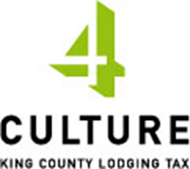Eastside Stories is our way of sharing Eastside history through the many events, people places and interesting bits of information that we collect at the Eastside Heritage Center. We hope you enjoy these stories and share them with friends and family.
Eastside Stories
Shichiro and Shin Matsuzawa were both Japanese citizens married in Japan. Hailing from Niigata Prefecture their first son was born there and remained in Japan all his life even though his parents would travel through Seattle to settle on the Eastside. Shichiro first made his way to the United States and arrived alone in 1906 while Shin remained in Japan with their child until they could afford for her to follow her husband later. They would live separate for at least two years as the events of their lives kept them from being reunited.
Although being lucky enough to have studied at Aoyama Gakuin University in Tokyo like most Japanese immigrants to our region Shichiro found work on farms. His first job on the Eastside was at a Snoqualmie dairy farm where he was injured by a bull soon after arrival. His second son, Joe, recounted the story of his father’s injury during an oral history interview with Densho. It seems Shichiro was knocked down by the bull while working with the farm’s cattle and his chest stepped on, crushing several ribs and badly injuring Shichiro. He avoided being trampled and managed to escape by grabbing the bull by the ring in its nose and pulling it off himself.
Sources in the Eastside Heritage Center archive say Shichiro contracted tuberculosis at this time, probably from the nature of this injury which would have weakened his lungs. Seeking better medical attention, he decided to return to Japan. Unfortunately, at the same time Shin was already traveling to Seattle to be reunited with her husband. When she arrived and could not find him, she sought work and strove to learn English. Finding employment as a housemaid in Yarrow Point, Shin also enrolled in night school. Working very hard she learned to read and write in English and prepared for when her husband Shichiro would eventually return.
Shin and Shichiro were reunited in Seattle in 1908 while their first son once again remained in Japan. After about two years apart they could finally begin to build a life here in America. Settling near where Shin already worked in Yarrow Point their second son, Joe, was born in 1913. The Matsuzawa family are a part of the first (Issei) and second (Nisei) generation of Japanese-Americans who helped to clear the land on the Eastside and farmed there until World War II led to the mass incarceration of people of Japanese descent, including the Matsuzawas.
This photo shows Schichiro & Shin Matsuzawa and was taken in 1908 when the couple was reunited in Seattle.
Resources
Eastside Heritage Center Archives
http://ddr.densho.org/interviews/ddr-densho-1000-23-1/
https://ddr.densho.org/media/ddr-densho-1000/ddr-densho-1000-23-transcript-a0c507f300.htm














